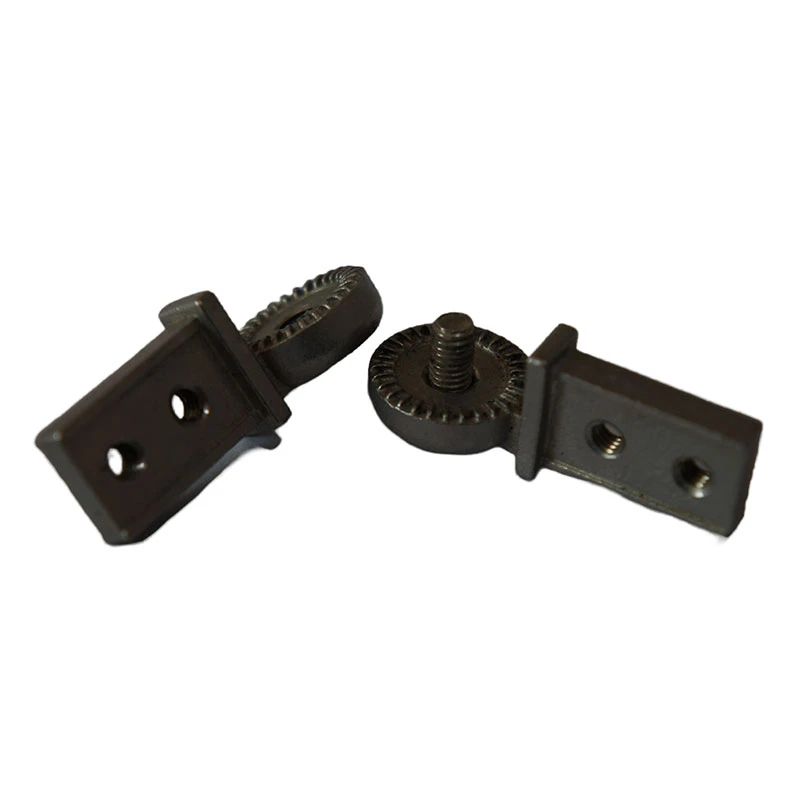copper sand casting
Copper Sand Casting A Versatile Approach to Metal Fabrication
Copper sand casting is an ancient yet highly effective method of producing metal components with complex geometries and intricate designs. Despite the advent of modern manufacturing techniques, sand casting remains relevant today, especially for materials like copper. This article delves into the principles of copper sand casting, its advantages, applications, and the challenges faced by manufacturers.
Understanding Copper Sand Casting
At its core, sand casting is a process that involves creating a mold from sand, which is then filled with molten metal to form a desired shape. The sand is an excellent material due to its high melting point, which allows it to withstand the heat from the molten metal. In the case of copper, the process requires a careful selection of sand and additives to create a mold that can hold the high temperatures associated with copper alloys.
The process typically begins with the creation of a pattern, which is a replica of the final product, made from materials like wood, metal, or plastic. This pattern is placed into the sand, creating a negative impression. The sand mixture is compacted around the pattern, creating the mold. Once the mold has solidified, the pattern is removed, and the mold is ready to be filled with molten copper.
Advantages of Copper Sand Casting
One of the primary advantages of copper sand casting is its versatility. This method allows for the production of complex shapes and designs that may be challenging or impossible to achieve with other manufacturing techniques. The ability to create intricate features makes copper sand casting an ideal choice for applications in industries such as automotive, aerospace, and artistic sculpture.
Additionally, copper sand casting is cost-effective, especially for low to medium production volumes. The materials used—primarily sand—are relatively inexpensive, and the process does not require advanced machinery or technology. This affordability allows small businesses and artisans to utilize sand casting without significant financial investment.
The process also accommodates a variety of copper alloys, including brass and bronze. Each alloy brings unique properties that can enhance the final product's performance. For instance, bronze, known for its corrosion resistance, is highly valued in marine applications, while brass, with its excellent machinability, is preferred for fittings and fixtures.
Applications of Copper Sand Casting
copper sand casting

Copper sand casting sees widespread use across multiple sectors. In the automotive industry, components such as engine parts, brackets, and housings are often produced using this method. The robustness and thermal conductivity of copper make it ideal for engine components that require durability and efficient heat dissipation.
In the aerospace sector, lightweight and high-strength components are crucial. Copper alloys, cast using sand casting techniques, are often used for parts such as electrical connectors and fasteners. The ability to create components with precision and reliability is vital in ensuring the safety and efficiency of aerospace applications.
Furthermore, the artistic community benefits from copper sand casting. Artists use this technique to produce intricate sculptures and decorative pieces. The flexibility of sand casting allows for individual creativity and unique designs that set the artwork apart.
Challenges in Copper Sand Casting
Despite its many advantages, copper sand casting does present some challenges. One major concern is related to the temperature control required during the melting and casting processes. Copper has a relatively high melting point, reaching approximately 1,984°F (1,085°C). Maintaining the correct temperature is crucial to produce a consistent and high-quality cast.
Another challenge lies in achieving the desired surface finish. Sand casting typically results in a rough surface texture, which may require additional finishing processes to meet industry standards. This can increase the overall production time and cost.
Finally, there is the issue of environmental impact. The sand used in the casting process can contribute to waste if not managed properly. Manufacturers are increasingly searching for sustainable practices, such as recycling used sand, to minimize the environmental footprint of sand casting.
Conclusion
Copper sand casting is a time-honored technique that continues to prove its value in today's manufacturing landscape. With its ability to produce complex shapes, cost-effectiveness, and versatility in applications, it remains a crucial method for fabricating copper components across various industries. While challenges exist, advancements in technology and sustainable practices are paving the way for a more efficient and environmentally friendly future in copper sand casting. As industries evolve, this method will likely continue to adapt and thrive, showcasing the enduring appeal of traditional manufacturing techniques.
-
OEM Sand Cast Pump Valve Fittings - Baoding Hairun Machinery And Equipment Trading Co., Ltd.NewsJul.31,2025
-
OEM Sand Cast Pump Valve Fittings - Baoding Hairun | Precision Engineering, CustomizableNewsJul.30,2025
-
OEM Sand Cast Pump Valve Fittings - Baoding Hairun Machinery And Equipment Trading Co., Ltd.NewsJul.30,2025
-
OEM Sand Cast Pump Valve Fittings - Baoding Hairun Machinery And Equipment Trading Co., Ltd.NewsJul.30,2025
-
OEM Sand Cast Pump Valve Fittings - Baoding Hairun Machinery|Precision Engineering&Fluid ControlNewsJul.30,2025
-
OEM Sand Cast Pump Valve Fittings - Baoding Hairun Machinery And Equipment Trading Co., Ltd.NewsJul.30,2025















